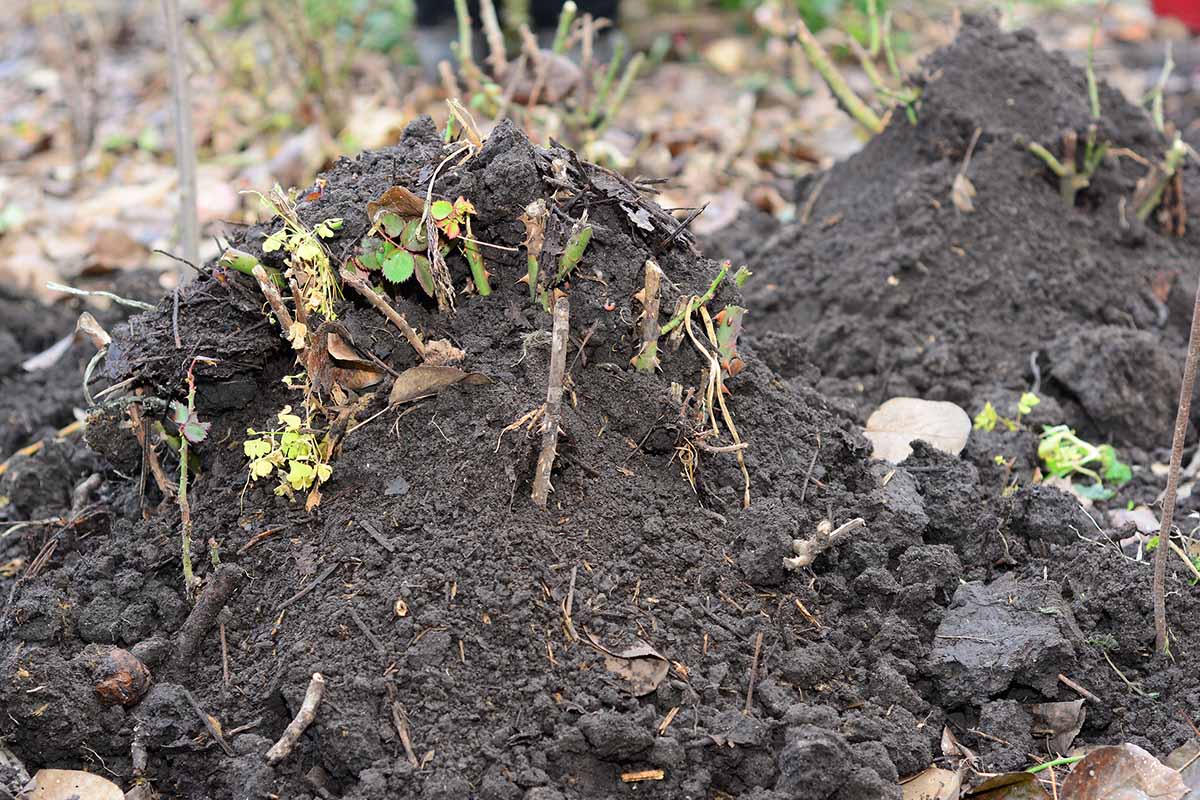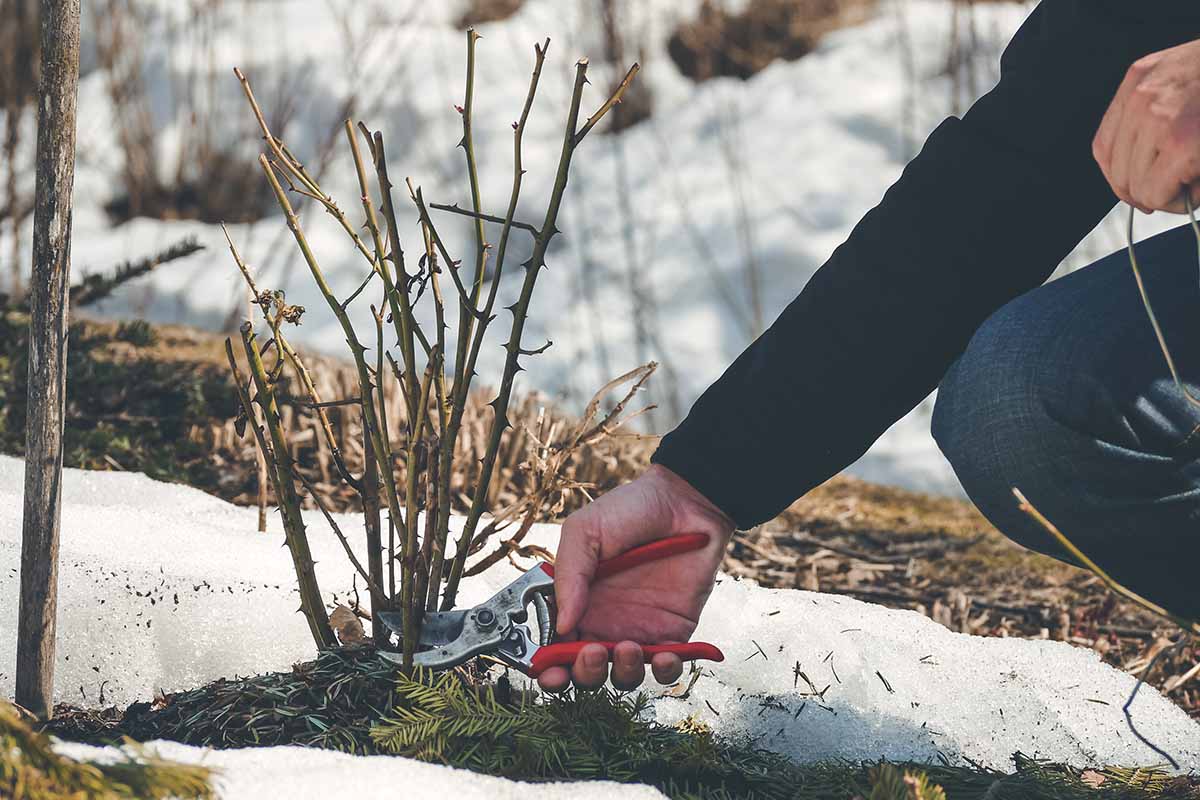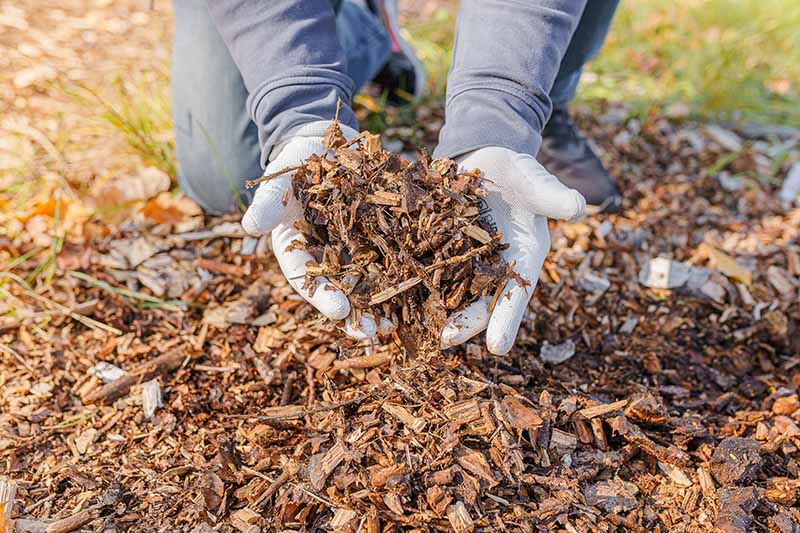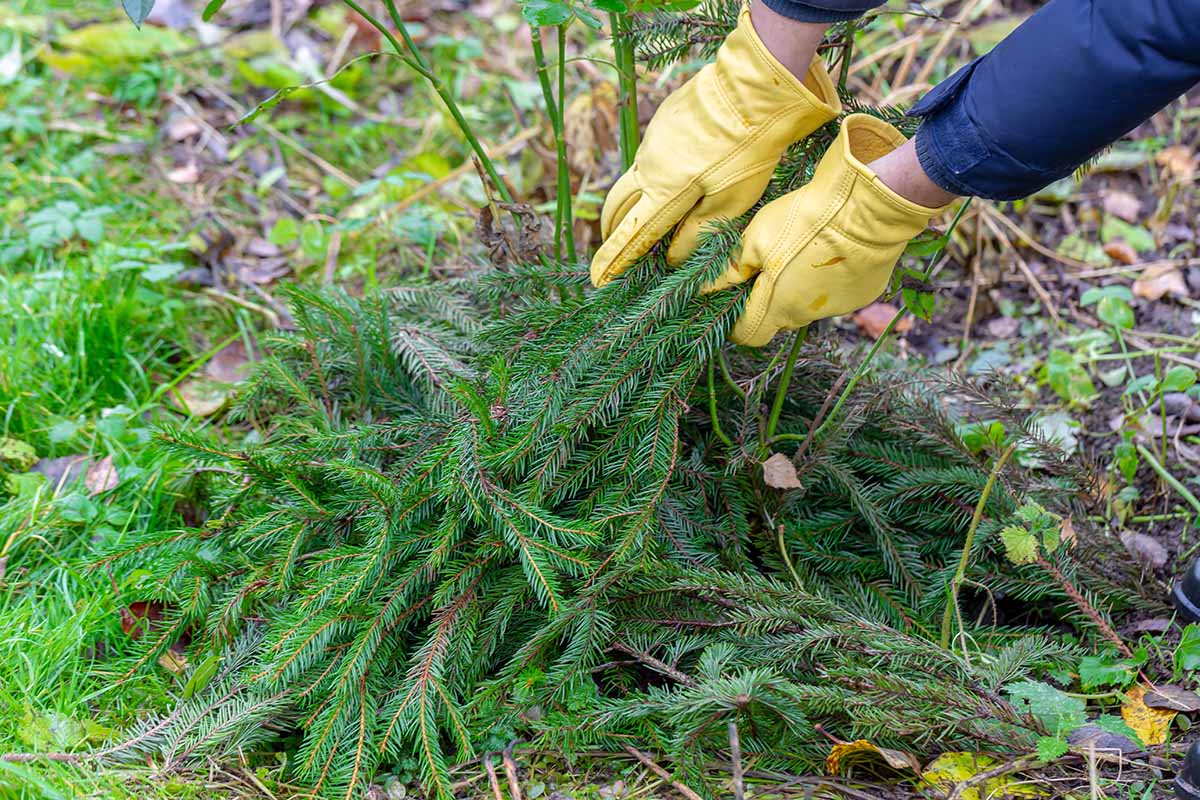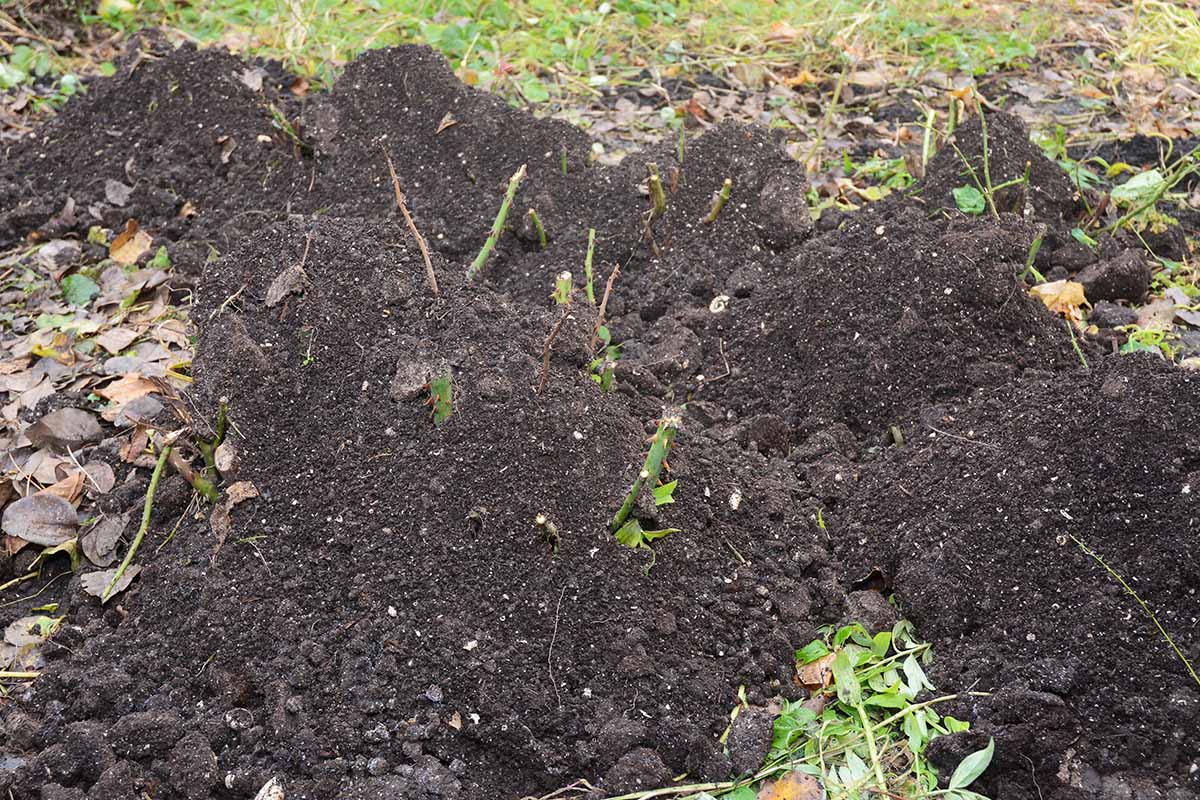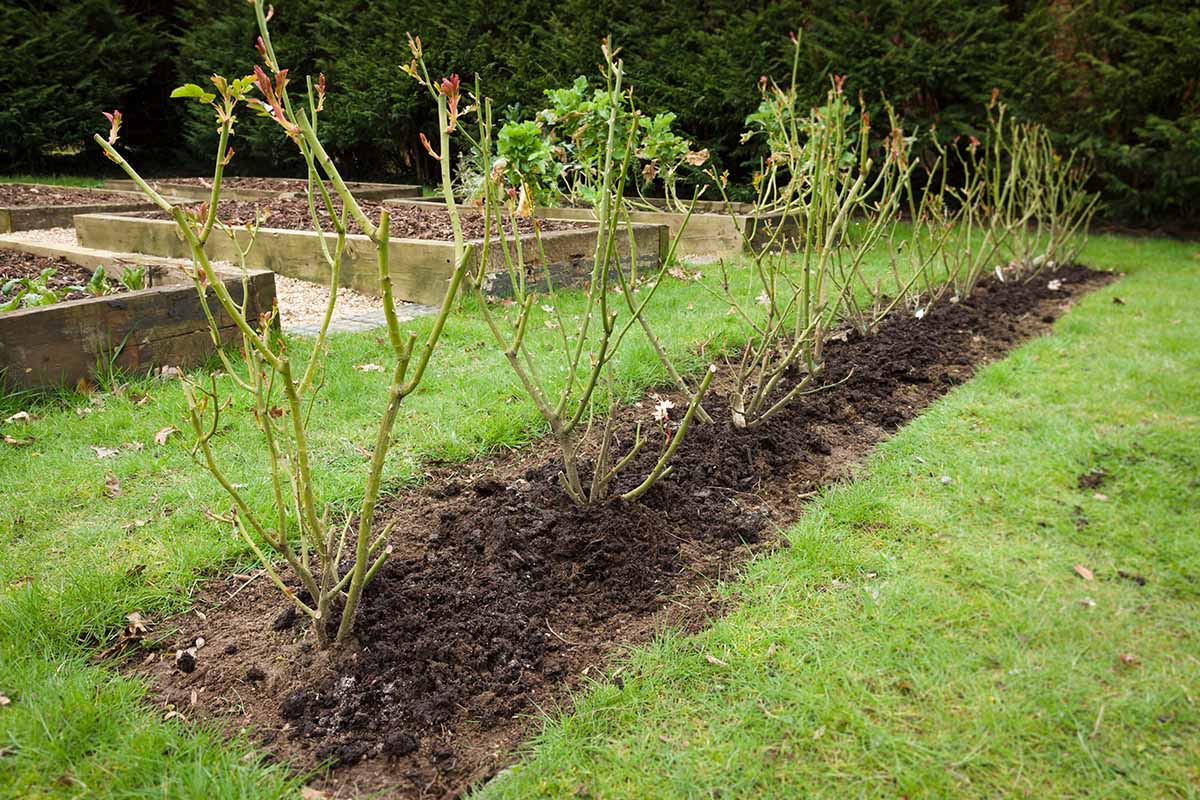Don’t worry, this task is easy and not everyone even has to do it. Mounding is a common practice, especially in areas that are a bit chillier than roses prefer. It helps to protect them from the winter freeze-thaw cycle that can kill your bushes. We link to vendors to help you find relevant products. If you buy from one of our links, we may earn a commission. You don’t want to go to all the effort of caring for your floral babies all summer only to lose them during a particularly harsh winter. We’ll help you protect those prized roses. Here’s what we’ll go over: Mounding is one of the easier rose maintenance tasks. It’s all about timing, and since winter waits for no one, we’d best get started.
Why You Should Mound
When fall rolls around, the days and nights become cooler and the days get shorter. In humans, this might drive us to reach for a sweater and hunker down with a cup of tea in front of the fire. But for roses, this triggers the production of abscisic acid. This acid is a growth inhibitor and it reduces respiration, prepping the plant for the cold months ahead. As the temperatures reach freezing, the exterior of the cane freezes and the water between the cell walls freezes as well. At the same time, some water leaches out of the cell walls, leaving sucrose behind. This acts as a sort of antifreeze in your plants that protects them from the cold temperatures. On warmer days, the water stays frozen and the plant is fine. But if the weather is too warm for too long, the sucrose-rich water inside the plant thaws and dilutes, and that raises the temperature at which the water re-freezes. If you were to have a deep freeze shortly after a long stretch of warm days, the water might form ice crystals as it re-freezes, damaging the cells of the plant. I explain all this because many people think of winter protection as an attempt to keep the plant warm. But that’s not exactly the case here. The point of mounding isn’t to prevent your plant from ever experiencing any cold weather, but rather, to protect the roots from temperature fluctuations between freezing and thawing. Not all roses need mounding. Knock Outs, Drifts, Oso Easy, and other modern types advertised as “easy-to-grow” options don’t need to be mounded. Hybrid teas, English roses, floribundas, and old roses stand to benefit from mounding. Grafted types particularly benefit because the graft union is more delicate than the rest of the stem. Every rose, even the easy care types mentioned above, should be fortified with at least some mounding in the first year, and any specimen that has experienced stress during the summer months – whether that be from pests, drought, or some other issue – should also be protected.
When to Mound
In areas that experience a hard freeze in the winter, wait until you’ve had a freeze or two before you mound up a little pillow for your roses to sleep in. The ground should be slightly frozen. In USDA Hardiness Zones 8 and up, you don’t need to add anything to your plants. Mound after you’ve done your fall pruning. You don’t want to do any major pruning in the fall, but you should cut tall bushes back a bit to prevent wind damage. Unless you have a climber, keep the shrub around five feet in height max.
What Materials to Use
There are a variety of materials you can use, and a few you should avoid. Anything that can hold water against the soil and stems is bad news. Grass clippings and whole, unchopped leaves tend to trap water underneath, which can cause root rot or even kill your plant. Avoid manure because it can add nutrients that will encourage your plants to grow rather than going dormant as it should be at this time of year. Instead, use something that is loose and well-draining. Potting soil, well-rotted compost, straw, finely shredded pine bark, or well-shredded leaves are all perfect. I like to use compost or straw because I can just spread it out into the garden come spring. Other types of mulch will need to be removed.
How to Mound Roses
When the time is right and you have your mulch material ready, clean up the planting bed thoroughly. You don’t want to trap some nasty pathogen or pest under a nice blanket where it can snuggle in and plan its attack for when the weather warms. Now, I’m about to confess something that will make the experienced rose grower gasp in horror. I’m ashamed to even admit it. But when I was first starting with roses, I thought I was so smart, getting out there and hilling up the soil from the garden around my plants to add winter protection. Don’t do what I did. If you scoop up soil from around the garden, you risk damaging the roots and you take away a layer of protection that the plant has become accustomed to – right when it needs it most. In Zone 5 and below, heap about 12 inches of your chosen material around the base of the stem. You can use less in Zones 6 and 7. If you want, add a thin layer of straw to hold looser mediums like compost in place. Some gardeners create cones out of wire to hold the material in place. These can be reused year after year. Or you can lay evergreen boughs over the mound to hold it in place. Once spring arrives and regular frosts are no longer on the menu, remove the mound.
Rose Cones
As an alternative to mounding, you can purchase cones. These are typically made out of styrofoam and are designed to be placed over a plant that has been pruned back for the winter. If you use these, there are a few things you should know. First, put it in place at the same time of year when you would normally mound. Second, they must have plenty of holes in the top and bottom. Most come with the holes pre-drilled, but if there aren’t at least half a dozen holes on the top and on the bottom, stab or drill some in. You should also place a brick or stone on top to prevent the wind from catching it and carrying it away. I find these cones to be a bit annoying because they break easily and they’re a pain to store during the summer. But someone must have heard my complaints and made something called a Rose Cozy. This is a cone made out of a tarp placed over a wire frame. It has a vent at the top and raised legs at the bottom for air circulation. It also has two straps designed for bricks to hold the whole thing down. Just put it in place and fill it with straw or wood mulch. I used one once when a specimen I adored had a particularly rough summer and I was sure the winter was going to kill it off. I can’t prove that the Rose Cozy saved it, but it continues to grow happily to this day. Rosy Cozy Cone Grab one for yourself at Gardener’s Supply Company.
Protect Those Precious Roses
Old Man Winter can do a number on roses. Don’t let him hurt your precious lovelies. A little heap of mulch or a cone can go a long, long way toward protecting your plants over the dormant season. What do you plan to use to protect your plants this winter? A little shredded wood? A cone? Maybe some pine boughs placed over straw? Share your plans in the comments section below. For more tips on caring for your Rosa bushes, check out the following guides next:
Growing Roses 101: Getting StartedHow to Plant Roses During the FallPlanting Rose Bushes: Step by Step Instructions7 Common Reasons Why Roses Drop Their Leaves


